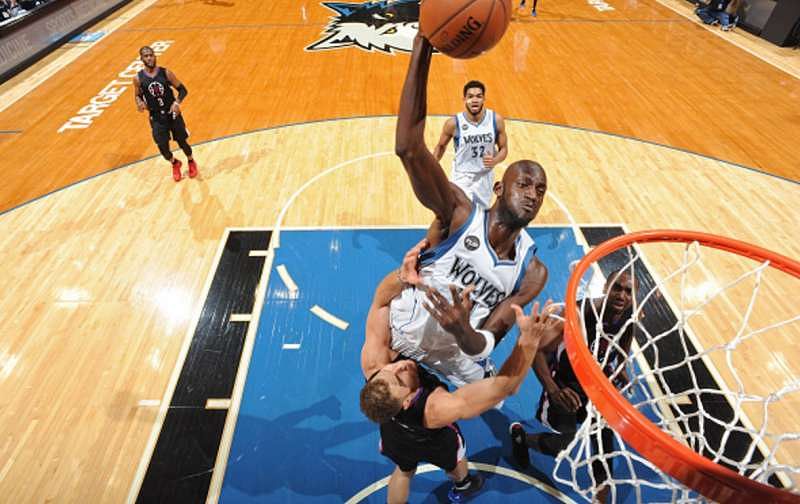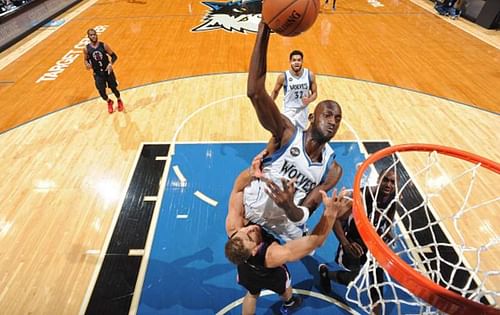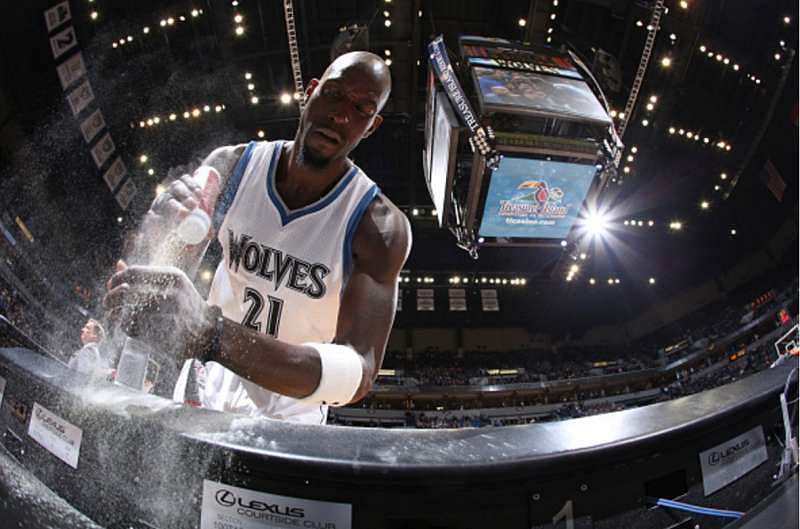
How Kevin Garnett changed the game as a master-of-all trades and grandmaster of craziness
The NBA has seen its fair share of passionate players. Michael Jordan was as competitive as they come. Larry Bird and Magic Johnson wouldn't give or take any quarters under any circumstances. What those three legends had in common was that they established their legacy with one team.
Today, another legend has announced his retirement, and he stands shoulder to shoulder with the greatest players to ever play the game by any quantifiable metric or hyperbole. And only the fact that his legacy is divided among two teams and that he was not a class act diminish his legacy a bit.
Although, the Wolves do have a rightful claim on him:
A word association test using Michael Jordan would conjure an image of him gliding, tongue extended, hand cocked back to slam the ball home with authority. Magic Johnson invokes an image of him smiling with all 72 teeth while he spins a pass defying the laws of physics on a Showtime fastbreak.
There is no image invoked by the name of Kevin Garnett on the basketball court which does not involve him screaming. His relentless motor helped propel him to having one of the greatest careers of all time in the NBA. Here's a look at what made him so unforgettable:
Intense master of all trades
Some years ago I wrote about how Garnett is a statistical anomaly when he became the only player in NBA history to amass over 25,000 points, 10,000 rebounds, 5,000 assists, 1,500 steals and 1,500 blocks. He now ends his 21 year career in rarefied company, finishing in either top 50 or top 100 in every major statistical category. Kevin Garnett will go down as among the greatest players to ever play the game in part because his numbers speak for themselves. Take a look at the rungs he's climbed:
3rd in minutes played- 50418
4th in value over replacement player- 94
5th in games played- 1462
9th in total rebounds- 14662
12th in field goals made- 10505
14th in +/- - 5.4
17th in points scored- 26071
19th in blocks- 2037
47th in assists- 54Garnett won the MVP in the 2003-04 season by leading the Minnesota Timberwolves to a 58 win season which was a franchise record. In his MVP season, Garnett averaged 24.2 points, 13.9 rebounds, 5 assists, 2.2 blocks and 1.5 steals. Sam Cassell, Wally Szczerbiak and Latrell Spreewell were his best teammates at that time, both capable players in their own right.
Owing to his large contract which, in fact brought about the new CBA made sure the Timberwolves were unable to surround him with a stronger supporting cast.
The 'Big Ticket' won the Defensive Player of the Year award in the 2007-08 season, the same year he won a championship with the Boston Celtics. He was voted into 15 All-star games, tying him for 4th all time in All-star selections. Garnett also made 12 All-Defensive teams, including 9 first team selections.
Throughout his career, Garnett earned upwards of $330 million from his contracts.
The first of me
Kevin Garnett helped establish three precedents in the league with his dominant play. Here's a look at those:
There used to be a time not long ago when YouTube was not even a figment of imagination, and editing videos meant going through VHS tapes and physically editing them. Had Kevin Garnett come up in 2003 like LeBron James, maybe his coming would have been heralded with more fanfare. As it was, Garnett was drafted fifth overall in the 1995 NBA Draft after Joe Smith, Antonio McDyess, Jerry Stackhouse and Rasheed Wallace.
The last time a NBA player came into the NBA draft from high school was in 1975 when Darryl Dawkins and Bill Willoughby did it. The Washington Bullets walked away from Garnett's pre-draft workout suitably impressed but trying to talk themselves out of taking a gamble on a high school prospect when a proven talent like Rasheed Wallace was available for the taking.
Garnett became only the fourth NBA player to jump from high school straight to the NBA. Kobe Bryant did the same after him, and over 30 other players followed in their wake including LeBron James and Tracy McGrady. There were also a number of other players who failed to live up to the expectations of making an early leap, and this helped lead to the One-and-done rule requiring high school players to spend at least one year in high school before being eligible for the NBA Draft.
While Garnett helped open the floodgates for players to come into the league early in the 90s, he also contributed towards the rising pay scale of the NBA star. The 1999 NBA Lockout was precipitated in part because of the then humongous contract Garnett signed with the Wolves in 1997.
A six-year, $126 million contract after being in the league for just three years might seem to be on the high side, and the owners certainly thought so. The then Timberwolves owner Glen Taylor had bought the franchise two years prior for $40 million lesser than what the Wolves signed Garnett to.
This led in part to the 1999 NBA Lockout, where the owners felt that the existing salary cap regulations did not work out too well for them. The Wolves did reap the benefits of the superstar, as he helped them make the playoffs eight consecutive times.
Garnett was also the first player of his size who could move that well and have a game which stretched out to the perimeter on both ends of the floor. Big players were seen as lumbering towers, good for staying in the paint. Garnett came into the league in an era of prominent big men, and he established his own niche with panache. He was crossing over big men before it became a thing.
When you see Giannis Antetokounmpo playing point guard, remember that Kevin Garnett made it fashionable for the big man to rack up assists and be a playmaker. The next time Kevin Durant takes long loping strides on the court and plays the game on the perimeter while downplaying his size, remember that Kevin Garnett listed his own height below 7 feet so as not to be typecast while he was actually 7’1”.
In a lesser way, he was also responsible for bringing back the practice of swatting shots after a blown whistle.


